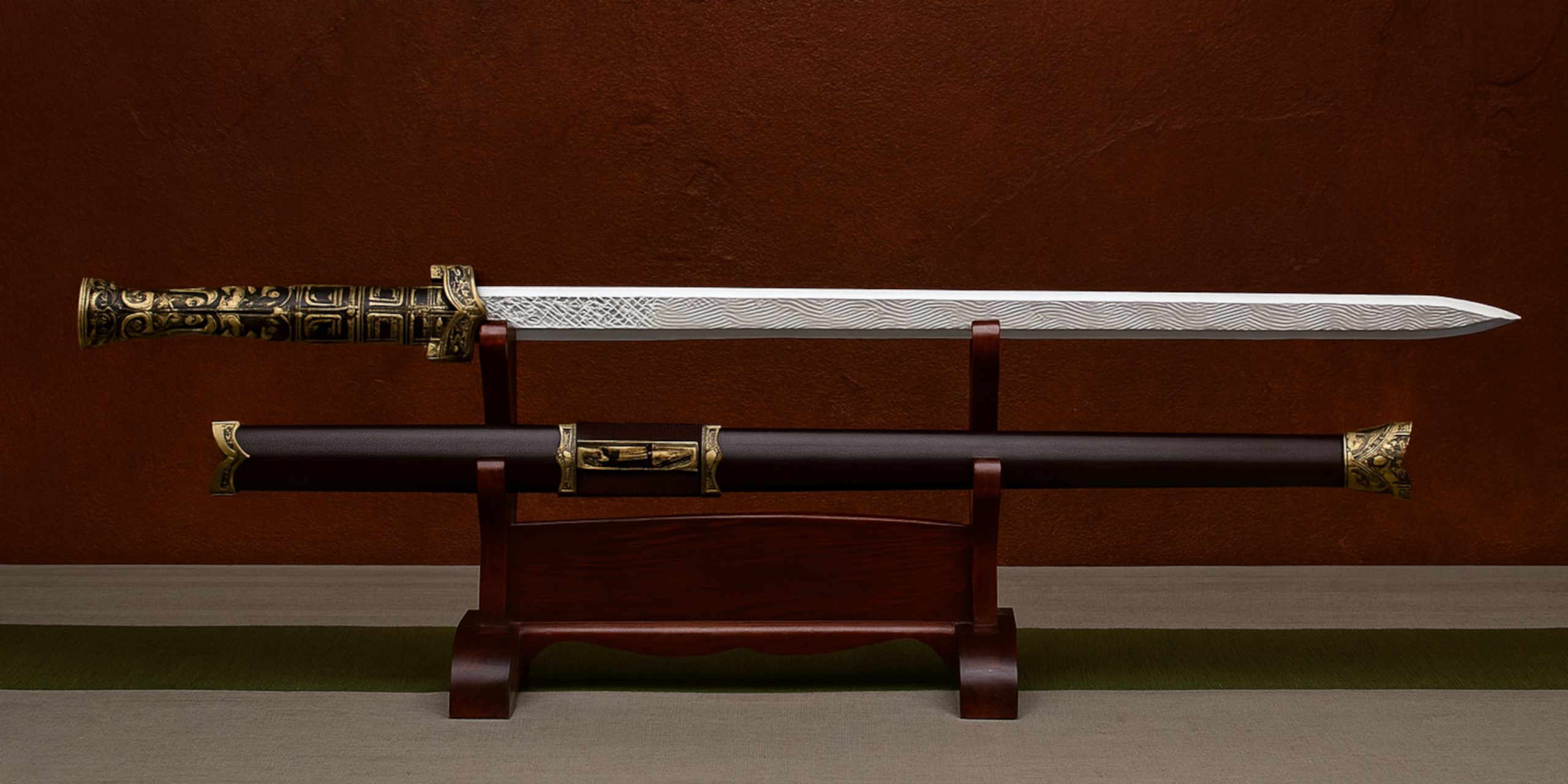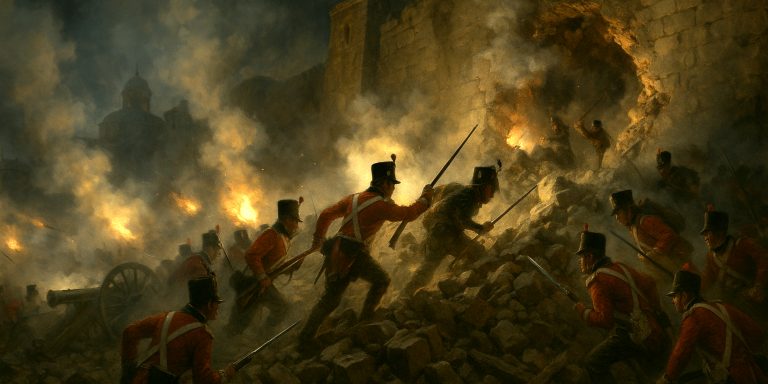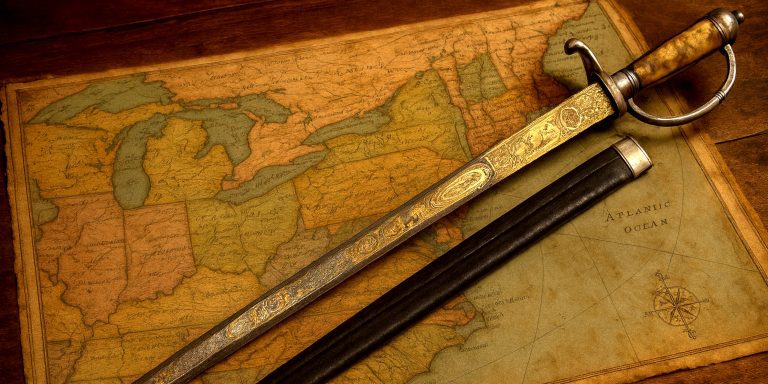
The Han Jian is a double-edged straight sword associated with the Han dynasty of China, which lasted from 206 BC to AD 220. Known for its balance and refined simplicity, it combined practical battlefield use with symbolic and ceremonial importance. Carried by soldiers, officers, and members of the elite, the Han Jian is an enduring representation of early Chinese steel-working skill.
Specifications
| Feature | Details |
|---|---|
| Type | Double-edged straight sword |
| Origin | China, Han dynasty |
| Overall length | Typically 70–100 cm |
| Blade length | Around 60–80 cm |
| Blade width | 3–5 cm |
| Weight | 700–1200 g |
| Blade material | Early high-carbon steel or pattern-welded steel |
| Hilt material | Wood or horn core, sometimes wrapped with silk or leather |
| Guard | Small disc or elliptical guard, bronze or iron |
| Pommel | Often ring-shaped or flat bronze fitting |
| Sheath | Wooden core covered with lacquered leather or decorated bronze fittings |
History and Evolution
The Han Jian developed from earlier Warring States and Qin dynasty swords, benefiting from improvements in smelting and forging technology. Han metalworkers refined steel production, creating blades that were stronger and more flexible than their predecessors.
- Early Han: Jian blades were often bronze or low-carbon steel with bronze fittings, continuing earlier traditions.
- Mid-Han: Refined steel-making techniques enabled harder edges and greater durability. Pattern-welding became more common.
- Late Han: Decorative inlays and elaborate fittings reflected the sword’s dual role as both a weapon and a symbol of status.
Battlefield Usage
The Han Jian was a standard close-combat weapon for both infantry and some cavalry during the Han dynasty. While polearms such as spears and halberds dominated formation fighting, the Jian was valued as a versatile sidearm.
Infantry Use
- Formation role: Infantry carried the Jian as a backup weapon for when spear lines collapsed.
- Transition weapon: Particularly useful in tight melee where long weapons were impractical.
- Techniques: Focus on thrusting at gaps in armour, supported by quick slashes to exposed areas.
Cavalry Use
- Officer’s sidearm: Favoured for its compact size and ease of use from horseback.
- Quick draw: Shorter length than later sabres allowed for faster deployment in close-range mounted combat.
Training and Martial Arts
- Carvings and records indicate Jian drills with paired practice, targeting precision and footwork.
- Combat training stressed fluid changes between thrusts and cuts without signalling intent.
Limitations in Combat
- Less effective against heavy armour than larger, heavier weapons.
- Shorter reach reduced advantage in open-field engagements, though effective in confined fighting.
Advantages and Disadvantages
Advantages
- Balanced for both thrusting and slashing
- Lightweight for rapid manoeuvres
- Prestigious symbol of rank and skill
- Effective against lightly armoured opponents
Disadvantages
- Limited effectiveness against heavy armour
- Requires high craftsmanship to maintain performance
- Shorter reach than polearms
- Needs regular maintenance to prevent corrosion
Comparison with Similar Weapons
| Feature | Han Jian | Tang Jian | Dao (single-edged sabre) |
|---|---|---|---|
| Blade type | Double-edged straight | Double-edged straight | Single-edged curved |
| Primary use | Thrust and slash | Thrust and slash | Primarily slashing |
| Historical era | Han dynasty (206 BC–AD 220) | Tang dynasty (AD 618–907) | Broad use from Han onwards |
| Weight | Light to moderate | Light to moderate | Moderate to heavy |
| Combat role | Infantry and ceremonial | Infantry and duelling | Cavalry and infantry |
Legacy
The Han Jian influenced Chinese sword-making for centuries and remains a symbol of martial discipline and refinement. It is still produced today for martial arts, historical study, and high-end collecting. Surviving examples in museums highlight its craftsmanship and cultural importance.
Where to See
- National Museum of China, Beijing – Multiple Han Jian specimens with bronze fittings
- Shaanxi History Museum, Xi’an – Excavated examples from Han tombs
- Henan Museum, Zhengzhou – Steel Jian with lacquered scabbards
- British Museum, London – Bronze and steel Jian from Han-era burials
Collector’s Guide and Auction Prices
Collector Considerations
- Authenticity: Expert verification is essential due to the prevalence of modern reproductions.
- Condition: Original fittings and minimal corrosion significantly enhance value.
- Provenance: Documented archaeological finds command the highest prices.
- Materials: Bronze fittings with inlays or inscriptions increase desirability.
Recent Auction Prices
| Year | Auction House | Description | Price (GBP) |
|---|---|---|---|
| 2022 | Sotheby’s | Han dynasty steel Jian with bronze fittings | £12,500 |
| 2021 | Christie’s | Bronze-mounted Jian with lacquered scabbard | £9,800 |
| 2019 | Bonhams | Excavated Jian, partial fittings | £4,200 |
| 2018 | Poly Auction Beijing | Exceptional inlaid Han Jian, near-complete | £25,000 |



